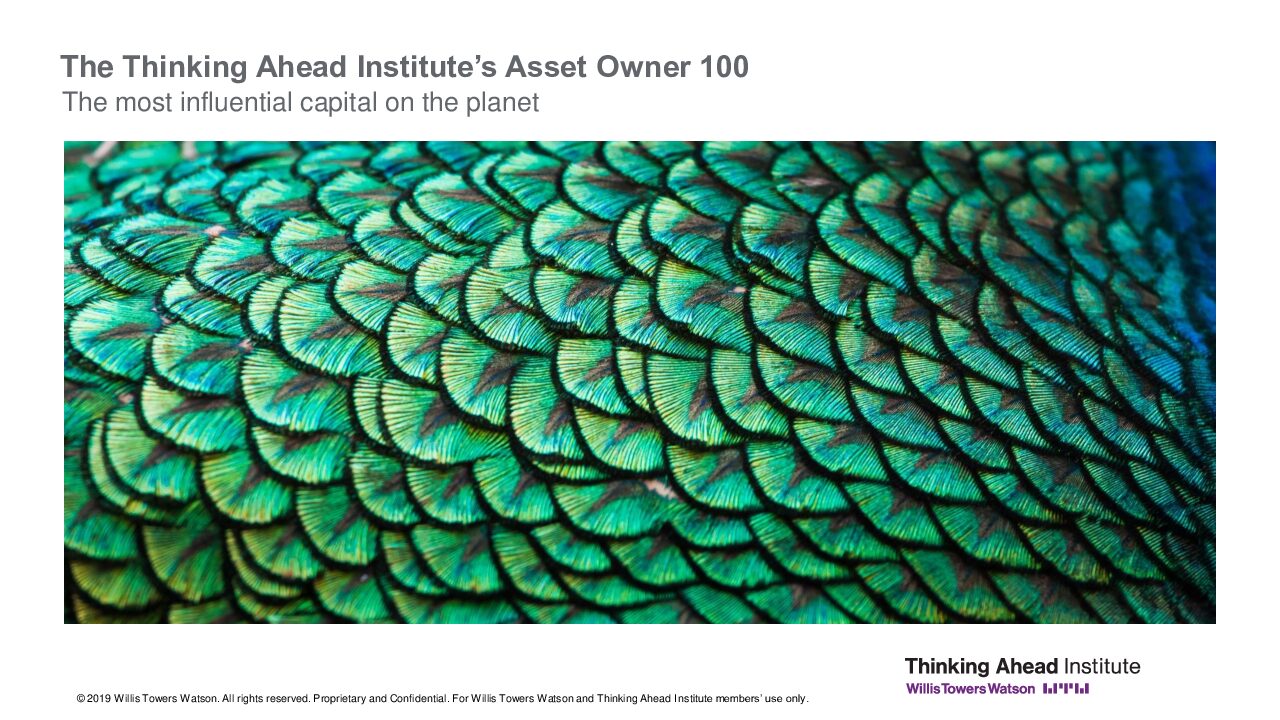Summary
- Discretionary assets under management of the world’s 100 largest asset owners totalled US$19 trillion, up 1.7% from last year.
- The top 20 funds total US$10.55 trillion and represent 55.5% of the assets in the ranking.
- APAC remains the largest region in terms of AUM, accounting for 36.1% of all assets in the ranking.
- EMEA and North America’s assets represented 32.3% and 31.6% respectively.
Key industry-wide observations
- Sustainability has become significant on asset owners’ ever extending agendas. They are tackling impacts, particularly set out against the SDGs; then interpreting the fiduciary duty dimension where their identification of loyalty to beneficiaries has to bring in inter-generational equity, whilst balancing traditional risk/return considerations. Data and technology is making the management of sustainability more sophisticated but not always more precise.
- Structural changes in the asset owner model complicate sustainability in investing. Examples include the de-risking trajectory of DB plans and governance challenges faced by DC plans. We also see a step-change in the focus on sustainability by insurance companies, whilst sovereign wealth funds are still struggling in this area, due to political constraints. Global best practice on sustainability for asset owners is on an upward trajectory, but still has a long-way to go.
- Governance and considerations of culture needs to be improved and has some way to travel with asset owners still being time poor.
- Asset owners are too important to fail in their mission. They carry a massive burden for the wealth and well-being of billions. They have no real choice but to take seriously their financial stakes and real world responsibilities and to lead from the front and address the big issues.
- We see universal owners as well-placed to play a more influential role in safeguarding the financial system and contributing positively to some of the big societal issues, including climate change and other environmental issues.
Key asset owner challenges
- Business model: Purpose, mission and vision need re-setting. This suggests strategy and culture should change. Funds have to build a more coherent view of their core stakeholders and their needs.
- Operating model:Strengthened governance and leadership. The relative influence of asset owners compared with asset managers is set to rise, in part through building bigger teams with stronger leadership, but also through the streamlining of governance particularly in delegations, partners and process. Impact from evolved regulations. Asset owners will be on the receiving end of further saver/investor protection regulations. What they invest in will also be over-regulated. This is a very mixed picture – some good, lots of bad.
- Investment model: Factors. Private. ESG. Funds have to explore these new opportunities in a market environment where most opportunities do not meet current targets. Factors are developing a bigger profile. Private markets are increasingly significant in the opportunity set. ESG is everywhere.
- China. The development of a strong access route and far-sighted strategy to mainland China assets will be critical, in a world that needs to build its understanding of the special factors governing China investment markets.

Source: Thinking Ahead Institute

Source: Thinking Ahead Institute

Source: Thinking Ahead Institute
What is an asset owner?
In our view, an asset owner has five qualifying characteristics:
- Works directly for a defined group of beneficiaries/savers/investors as the manager of their assets in a fiduciary capacity (upholding loyalty and prudence) under delegated responsibility
- Works with a sponsoring entity, usually a government, part of government, a company or a not-for-profit
- Works within explicit law and possesses an implicit societal license to operate because of its societal trust and legitimacy
- Delivers mission-specific outcomes to beneficiaries and stakeholders in the form of various payments or benefits into the future
- Employs a business model that combines a governance budget (essentially resources and processes) and a risk budget (reflecting the mix of financial assets that delivers on the mission).
Pension funds are the single biggest group of asset owners meeting all the qualifying criteria above. Sovereign funds, OCIOs, endowments and foundations also fully qualify. Other institutions, such as insurance companies and mutual fund partly qualify.

